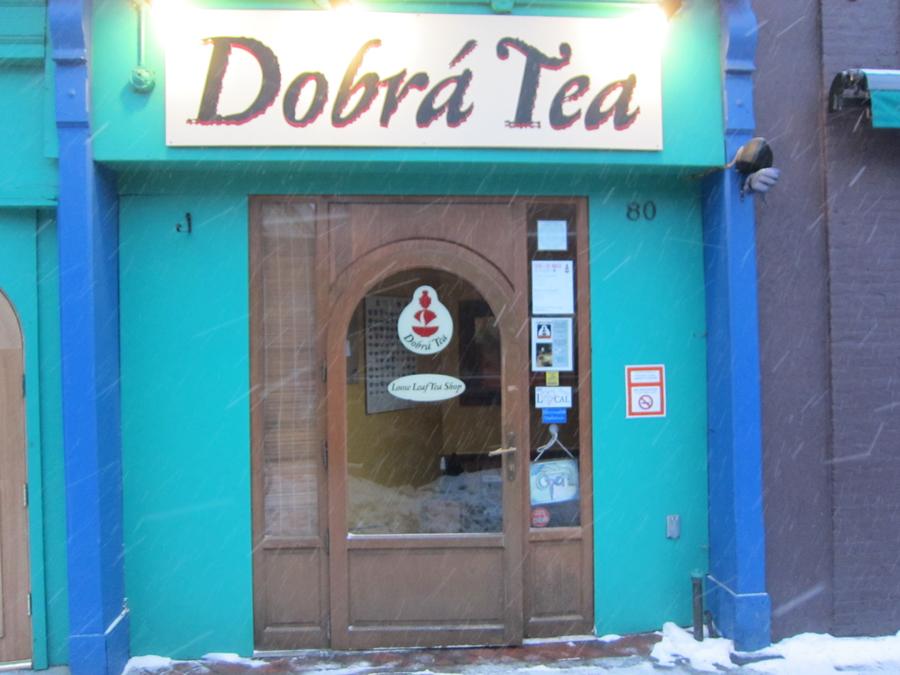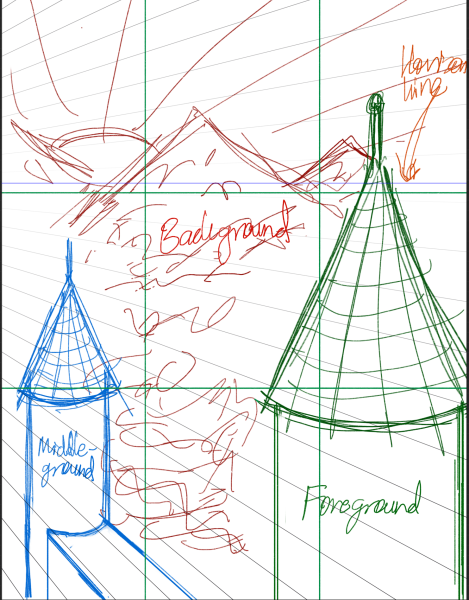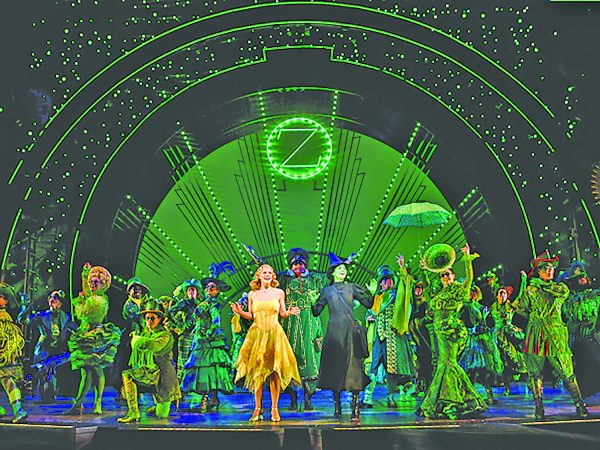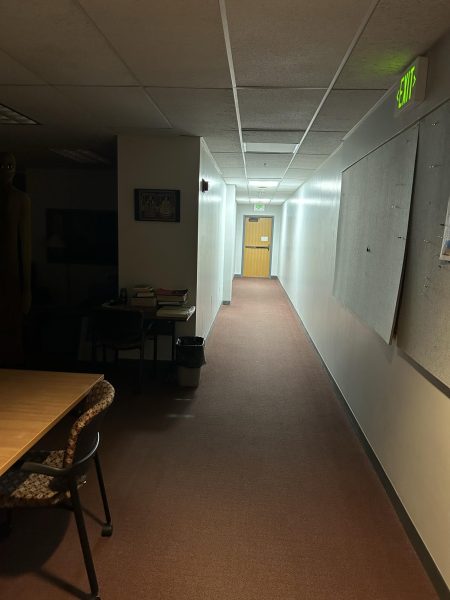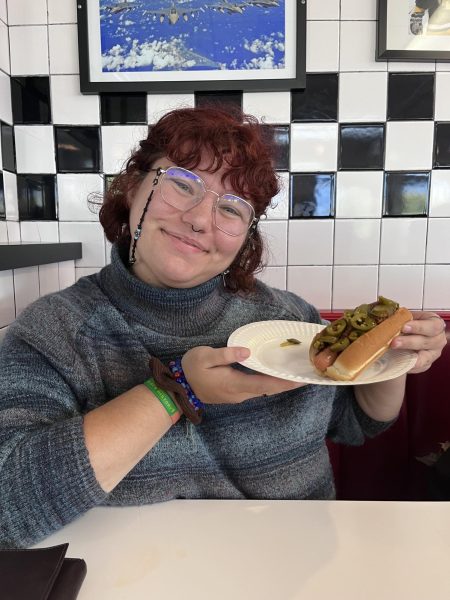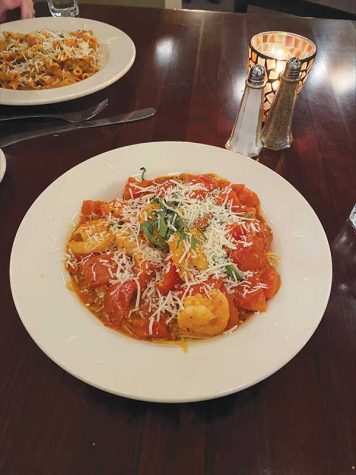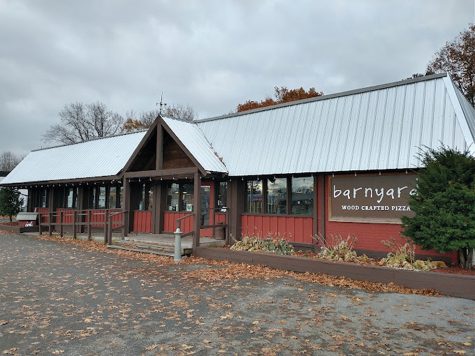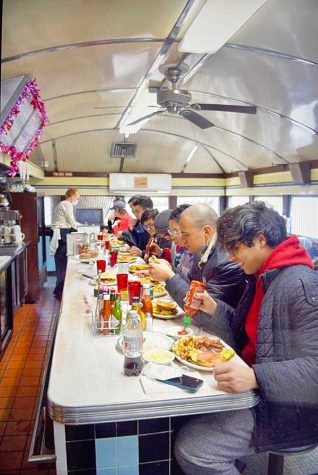Dobrá Tea brings the East to you
Dobrá Tea’s Bank Street entrance
This season’s icy grip has been making my family cranky; the six of us were seeing way too much of each other and, frankly, my kids were starting to have faces even I couldn’t love. We were getting stir-crazy and my daughters were begging for a mother-daughter day.
I wanted to give my girls an experience. Something different, that would remind us all that somewhere past the endless tundra of Vermont there exits life.
After some thought and a reassurance that my bank account could stand a splurge, I decided to take them to Dobrá Tea. Just around the corner of Church Street on Bank Street in Burlington, the entrance stands out against the other businesses, the doors arched in Middle Eastern style and cheerful walls painted with bold blue and teal colors.
Inside, the aroma of jasmine and ginger with the woodsy scent of green and black teas tantalized our noses. As my girls oohed over the glass display of freshly made brownies and cookies, I looked around; we weren’t the only ones looking to the small cafe for a cozy evening. Behind the entrance’s three-foot tall statue of Buddha the small room was cramped, every tiny table teeming with relaxed patrons and clinking teacups.
There was a wait, but it was worth it; we got a small area in the far back partitioned by beaded curtains to relax in. As we took our shoes off and then gathered cross-legged around a table only inches high, I was glad we hadn’t brought my husband or my son who have the flexibility of rebar.
Beside each name was a rich description touching on tradition, legend, and history. “Tian Mu Long Zhu- Dragon Eyes,” it read. “An extra-fine, high quality green tea made from selected fresh tea tips. This tea exhibits a flowery taste, the aroma of a mountain breeze, and a unique appearance…” Even a person with little tea experience could feel like a connoisseur here.
The foreign atmosphere sucked us in, sitting so close we touched and with no chair keeping us from the ground. Perhaps it was the feeling of being somewhere exotic that made my daughters relax, opening to each other and me. Conversation, like the tea around us, flowed freely.
Our drinks were served with the intimacy and reverence we had come to expect. The waiter, as formal and serene as the ancient silver teapots lining the walls, knelt as he poured steaming water into a small clay teapot. “Let it sit for only ten seconds before pouring it into the pitcher,” he instructed quietly, demonstrating. He then poured the tea into two cups, moving the pitcher back and forth, light brown liquid casually spilling to the side and on the tray in between. We somehow knew this wasn’t sloppiness but part of the ceremony.
And the tea! It was good quality; I am a lover of the leaves and I know. There are two things that contribute to the bitterness acquainted with green or black tea – improper preparation or low-quality leaves. Anything coming in an opaque bleached bag is of the worst kind.
What was served here was loose, fresh. “Remembering the Tea King” was smooth with a light floral aftertaste and no bitterness. The liquid sat golden brown against the white ceramic of my teacup. Fortunately, every $5-$6 pot of tea comes with extra hot water kept warm with a tea light candle. A customer can easily get her money’s worth of three to four brews (another sign of high quality) before the leaves are completely spent.
As far as money goes, it’s trying to eat a meal that makes you dig past the fluff in your pockets. It isn’t that the Middle Eastern food is extravagantly priced – I paid $3 for a side of two small dolmas, Charlotte got two cookies and a tiny slice of cake for $6, and Maya got a meal package of rice and gomasio, crystallized ginger, and her own pot of tea for $11 – it just adds up real quick for a mom used to paying $7.29 per head at a Chinese buffet. I spent about $35 but would have left hungry if we had not eaten at the Olive Garden before coming.
Still, it was the experience we sought after and it was the experience we found. Dobrá Tea forced us into another realm, one where we sat so close together our elbows jabbed the gut of the person beside us and we didn’t mind. A place where tea wasn’t something ordered in a Styrofoam cup, doused with sugar, and delivered in less than four minutes. It was a place of appreciation – for the tea and for us. I’ll pay the little extra for that any day.
Travis LeClair joined the Basement Medicine staff in Spring 2014, assuming the position of staff reporter.


